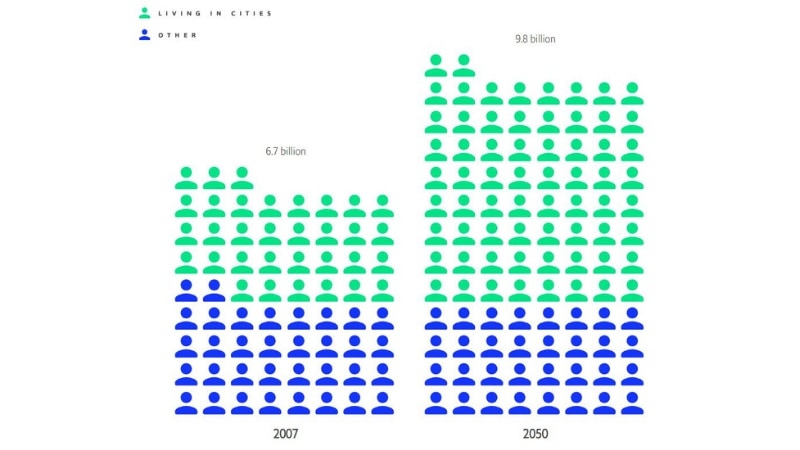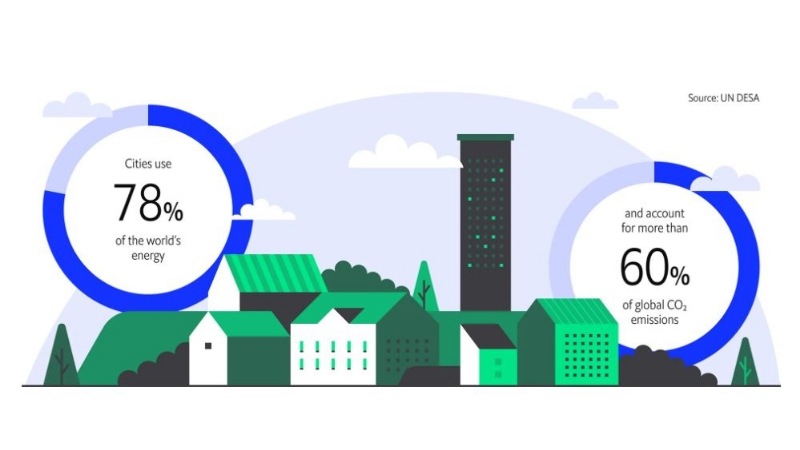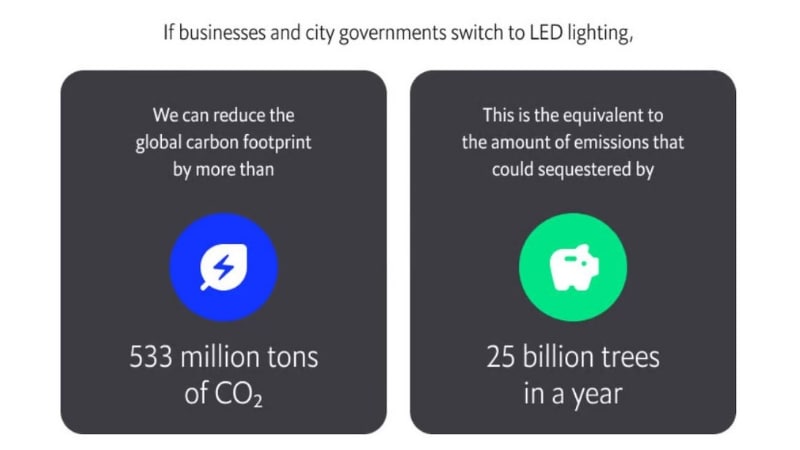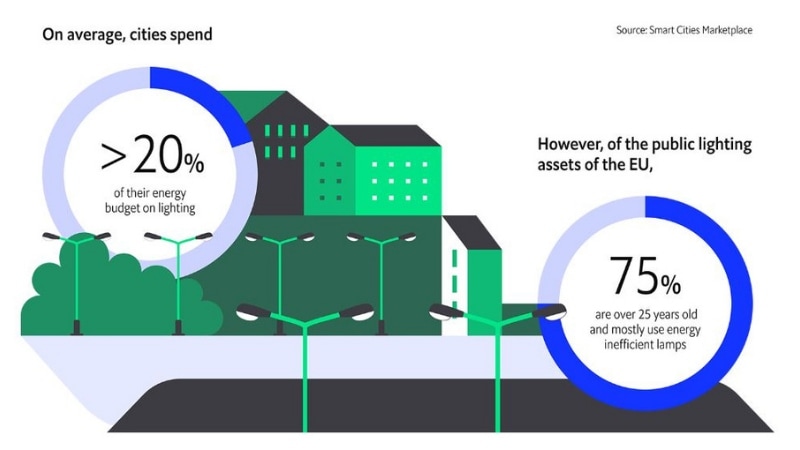December 1, 2023

A long-term infrastructure strategy is vital to a city's healthy and sustainable growth. It lays out how a city can move toward a smart future by successfully attracting new businesses, creating new jobs and improving citizens' quality of life. The most successful cities will be hubs for innovation, where they will be the test beds for new, life-enhancing technologies.
World leader in lighting Signify believes that it can be a vital partner in creating this kind of sustainable growth; its Green Switch programme helps cities and businesses to reduce energy consumption, cutting costs and carbon emissions, and to enhance both the outdoor infrastructure and the built environment to make it safer and more secure. Signify’s connected lighting can also provide a shared infrastructure for other smart city and smart building projects.
Not only do city governors have to manage the challenge of urbanisation, but they must do so in a way that meets long-term net-zero commitments, an important aspect of any smart future vision. Cities use around 78% of the world's energy, accounting for more than 60% of its greenhouse gas emissions. Over the coming decades, cities’ economic development plans must align with a shared social and environmental vision, and exploit all possibilities for increasing energy efficiency.
Business growth must also be sustainable. Organisations shoulder a large part of the burden to decarbonise cities, for example through net-zero building renovations.
The importance of decarbonising the built environment is also not lost on legislators. They have created a raft of incentives – including the Green Deal and Fit for 55 in the EU, the Infrastructure Investment and Jobs Act and the Inflation Reduction Act in the US, and the New Infrastructure initiative in China – that help businesses and city governors to reduce carbon emissions.

The US Department of Energy suggests that lighting is responsible for 15% of global electricity consumption and 5% of worldwide greenhouse gas emissions. Lighting accounts for a large share of any city's energy costs and carbon emissions. According to Signify’s research, on average it constitutes between 20% and 40% of a municipality's electricity consumption.
The EU's Smart Cities research shows that most public lighting is old and inefficient. Around 75% of EU public lighting is more than 25 years old and uses inefficient lamps. Similarly, more than half of the 40m street lights in the US have not yet been upgraded to energy efficiency alternatives.

Creating a connected lighting system means that all lighting can be controlled remotely and in real time. Parks, squares and other open spaces can be lit in more considerate and energy-efficient ways, dimming or brightening specific zones, based on their use.
In off-peak periods, motion detectors can be used to light areas only when people are present, reducing costs while maintaining citizens' safety and security. Connected LED lighting can be used in innovative ways. For example, in an emergency, street lighting can be brightened to assist first responders.
Many street lighting projects improve a city’s security. According to the World Council on City Data, connected LED street lighting reduces night-time traffic accidents by 30%, and assaults and burglaries by 21%.

Gerald Schmid
Mayor of Knittelfeld
Public lighting does not just have to be functional. It can also be used to create dramatic effects, for example by lighting popular landmarks with colours on important anniversaries or national holidays.
Signify used its Interact connected lighting system to illuminate more than 40 historic buildings in the Bund area of Shanghai. This project complements a scheme that lights three bridges and 77 buildings in Shanghai's Pudong financial district. Together with high-quality architectural LED lights from Signify, Interact lights the bridges and buildings with clear, bright and controllable colour. The lighting gives the city a unique identity, while helping to meet its energy efficiency goals.
The benefits of connected lighting go much further than enhancing a city's built environment. For example, the connected infrastructure that supports it can be used by many other services. Remote fault detection is a common place for a city to start. Previously, maintenance crews had to visit each asset regularly to carry out visual checks on street lights or rely on members of the public to report faults.
With a communications network, the lighting team can be notified automatically when there is a fault. Automating street lighting maintenance not only cuts a city's costs by reducing the number of inspections, but also reduces vehicle emissions.
Furthermore, data from smart lighting – ambient noise, temperature and motion detection – can be shared with other city applications. A smart lighting infrastructure can be used as a platform for other smart city services or to provide citizens with broadband services. Energy monitoring via the lighting management system can support power networks to improve grid stability.
With net-zero deadlines looming, city governors understand the urgent need to invest in new, smarter, more energy-efficient infrastructure. City lighting is a simple first step. The good news is that substantial sums are being made available to support these investments through programmes such as the EU's Green Deal, the US's Inflation Reduction Act and China's New Infrastructure initiative.
Additional funding is also available through blended finance initiatives, including public-private partnerships. Signify's Green Switch programme has been designed to help to streamline access to financing, accelerating efforts to make public lighting more energy efficient and create cities that are fit for the future.
Signify works with its partners to help them understand how lighting can best support their sustainability goals, to identify appropriate lighting products and systems, to provide support in choosing and applying for the right finance and funding, and ultimately in setting up a lighting solution and measuring its sustainability impact.
Cities are on the front line of climate action. They are where Signify, which last year featured in the annual Dow Jones Sustainability World Index for a sixth consecutive time, is demonstrating lighting’s vast potential to reduce energy consumption, meet service demands, improve grid stability and help to ensure a smart future for all.
Signify Global Media relations - Professional Lighting
Claire Phillips
Tel: +44 7956 489081
Email: claire.phillips@signify.com
Signify (Euronext: LIGHT) is the world leader in lighting for professionals, consumers and the Internet of Things. Our Philips products, Interact systems and data-enabled services, deliver business value and transform life in homes, buildings and public spaces. In 2023, we had sales of EUR 6.7 billion, approximately 32,000 employees and a presence in over 70 countries. We unlock the extraordinary potential of light for brighter lives and a better world. We have been in the Dow Jones Sustainability World Index since our IPO for seven consecutive years and have achieved the EcoVadis Platinum rating for four consecutive years, placing Signify in the top one percent of companies assessed. News from Signify can be found in the Newsroom, on X, LinkedIn and Instagram. Information for investors is located on the Investor Relations page.
